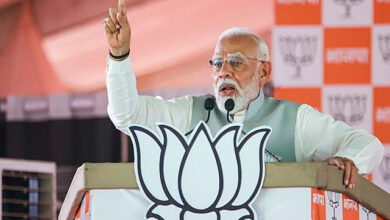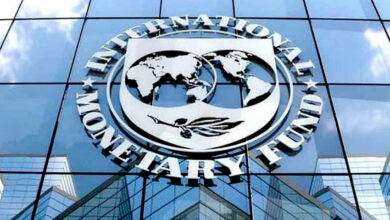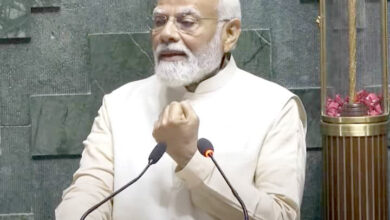Blended identities: The Indian American success saga
By TARUN BASU

“I may be the first, but I will not be the last. It’s on those of us leading the way to leave the door more open than it was when we walked in,” an exultant Kamala Harris tweeted on December 14 after the electoral college officially affirmed the victory of Joe Biden in the 2020 US presidential election. It not only confirmed her ascent to Vice President on January 2021, but made her a putative candidate for the 2024 Presidency.
The nomination—and subsequent election—of the US-born Indian-origin Kamala Harris put the media spotlight on America—and around the world—on the small, but respected and high-achieving Indian-American community. It is a fascinating and inspiring story of how an immigrant population from a developing country, with low education levels, became the most educated, highest-earning ethnic community in the world’s most advanced nation in almost a single generation.
Immigrants from India, as well as their children born and raised in America, have made their mark in almost every conceivable field in the US—science and engineering, medicine, business and entrepreneurship, academia, media and the arts, philanthropy, and now, increasingly, in administration and public service.
Physicians (doctors) of Indian origin have very high visibility, and are among the most respected, as they make up the largest non-Caucasian segment of the American medical community. The American Association of Physicians of Indian Origin (AAPI), a professional body of Indian-American physicians, claims an 80,000-strong membership. These doctors have been hailed for their dedication, particularly during the Covid-19 pandemic.
Likewise, in the hospitality industry, Indian Americans have made a name for themselves by virtually reinventing the hotel industry. The Asian American Hotel Owners Association (AAHOA) counts a majority of its nearly 20,000 members as being of Indian origin, notably Patels from Gujarat.
Numbering over four million, and fast heading to be five, people of Indian origin make up about 1 percent of the US population and are expected to rise to 2 percent by 2030. And they have made their mark with a culture of hard work, inclusive attitude, risk-taking, and passion for excellence in whatever they do, often making themselves objects of envy of other immigrant populations.
In their seminal work of 2016, “The Other One Percent: Indians in America”, Indian American professors Sanjoy Chakravorty, Devesh Kapur, and Nirvikar Singh observed that immigrants from India have a unique position in the US, not comparable to other ethnic groups, not even to the natives of India. Indian-Americans are by far the best-educated group in the country with roughly three times more India-born residents with college degrees than the general population; and Indian-American households have the highest income level among any group in the country, more than twice as high as the general US population.
The fact that many come to the US with just a few dollars in their pockets but with big dreams and ambitions itself is a testimony to their risk-taking mentality and entrepreneurial spirit.
Dipak Jain, co-president and global advisor of China Europe International Business School, who did not know English very well before coming to the US for a Ph.D. from Assam, gives a lot of credit to US meritocracy. “The Indians who have come here have all strived for excellence and not mediocrity, and people in the US can see through this quality of Indians because America values meritocracy,” Jain is quoted as saying in the book “Kamala Harris and the Rise of Indian Americans”.
After the November 2020 elections saw a clutch of Indian-Americans, including many US-born, rising to political prominence at national, state, and local levels, one young activist proudly proclaimed, “Our time has come.”
With one of their own seen as the nation’s second-most-powerful figure, Indian-Americans are quite comfortable in their minds with their blended identities—culturally Indian yet emotionally American—and see no contradiction in that.
Kamala Harris, whose mother was from Chennai, had told the Washington Post in 2019 that politicians should not have to fit into compartments because of their colour or background. “My point was: I am who I am. I’m good with it. You might need to figure it out, but I’m fine with it,” she said.
It is a line that will echo with most Indian-Americans today.
In fact, President Joe Biden remarked in a March 2021 phone call with Swati Mohan, an Indian-origin scientist at NASA who was charged with overseeing the landing of the Perseverance Mars rover: “It’s amazing. Indian—of descent—Americans are taking over the country: you, my vice president [Kamala Harris, whose mother was born in India], my speechwriter, Vinay [Indian American Vinay Reddy]. . . . You guys are incredible.”
Today, there are as many as 130 Indian Americans in key positions in the Biden Administration. It was an affirmation of the growing influence of the Indian American diaspora which, as the Carnegie Endowment for International Peace noted, not only has the Indian American community grown in profile, but with that has grown its economic, political, and social influence as well.
According to the list prepared by Indiaspora, more than 40 Indian Americans have been elected to various public bodies across in the country, including four in the House of Representatives in Washington DC.
In addition, there are over two dozen Indian Americans heading US companies, including Sundar Pichai of Google and Satya Nadella of Microsoft.
What must be acknowledged is that the growth is elemental to the American social and political ecosystem which celebrates diversity and has given room for a generally hard-working, educated and enterprising people to live their American dream.
As M R Rangaswamy, Silicon Valley entrepreneur, philanthropist and founder of Indiaspora, says aspirationally in his chapter ‘How Indian Americans made their mark in Silicon Vallery’ in the book: “After the election of Vice President Kamala Harris, Indian-Americans only have one rung left to climb.”
(The writer, former Chief Editor and Director of IANS, is editor-author of the anthology Kamala Harris and the Rise of Indian Americans – Wisdom Tree publishers)





